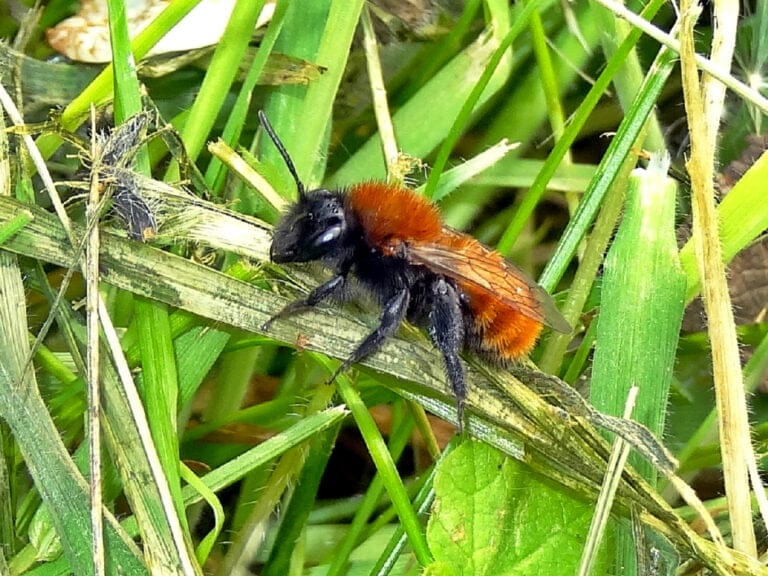Tawny Mining Bee Identification: A Complete Guide
The Tawny Mining Bee (Andrena fulva) is one of the most distinctive solitary bees in the UK. Known for its reddish-brown fur, this ground-nesting bee is a valuable pollinator in gardens, meadows, and woodlands. Learning how to identify solitary bees like the Tawny Mining Bee can support biodiversity and contribute to the health of local ecosystems.
Behavior and Habitat of the Tawny Mining Bee
The Tawny Mining Bee is most active in spring, typically from March to May. These bees prefer sunny, grassy areas with loose, sandy soil where they dig burrows. You’ll often find them in lawns, flower beds, and parklands, creating small mounds of soil at the entrances to their nests.
- Preferred Habitat: Tawny Mining Bees thrive in well-drained, open spaces like gardens and woodland edges. These areas offer the ideal environment for them to dig their nests.
- Nesting Sites: These solitary bees create small mounds of soil, marking the entrances to their ground-nesting burrows.
Nesting Habits of Andrena fulva
The Tawny Mining Bee is a well-known ground-nesting bee. Like many solitary bees, each female digs her own tunnel in the ground, with multiple chambers branching off.
- Nesting Process: The female lays a single egg in each chamber, supplying it with pollen and nectar. Once the egg is laid, she seals the chamber with soil. The larvae feed on the stored food, then pupate and stay underground through winter. They emerge as adult bees the following spring.
- Solitary but Close Nesting: Although solitary, Tawny Mining Bees often nest close to one another, forming what looks like a small mining bee village.
These bees are non-aggressive and pose no threat to humans or pets. Their role as pollinators of spring flowers and fruit blossoms makes them essential for maintaining pollinator diversity in gardens.
How to Identify the Tawny Mining Bee
Tawny Mining Bee identification is easy due to their distinctive features. Females are 10-12 mm long and covered in thick reddish-brown fur.
- Size: Females are larger and more robust than males, who measure around 8-10 mm.
- Coloration: The Tawny Mining Bee is notable for its dense orange-red fur on the thorax and darker fur on the abdomen. Males have a more slender body with lighter golden-brown fur and longer antennae.
These reddish-brown bees are easy to spot, especially when creating small piles of soil in your garden. Their distinctive coloration and ground-nesting behavior make them a key species for anyone learning how to identify solitary bees.
Encouraging Tawny Mining Bees in Your Garden
If you want to support solitary bees like the Tawny Mining Bee, creating a bee-friendly garden is essential. Promoting pollinator diversity enhances the overall health of your local ecosystem.
- Plant Variety: Grow early-blooming plants like fruit blossoms and spring flowers to provide nectar and pollen. These flowers are vital to support Tawny Mining Bees during their active months from March to May.
- Avoid Pesticides: Refrain from using harmful chemicals that can affect these important pollinators.
- Provide Nesting Spaces: Leave areas of bare, sandy soil in your garden to accommodate these ground-nesting bees. This encourages solitary bee nesting and helps boost local bee populations.
By creating a bee-friendly environment, you can attract Tawny Mining Bees and other important solitary pollinators. Supporting these species is crucial for maintaining a balanced ecosystem and enhancing the biodiversity of your garden.
To learn more about protecting solitary bees and other pollinators, visit Buglife, an organization dedicated to invertebrate conservation.
Building a bug hotel is another great way to support solitary bees like the Tawny Mining Bee in your garden. Learn more in our guide on how to make a bug hotel.





